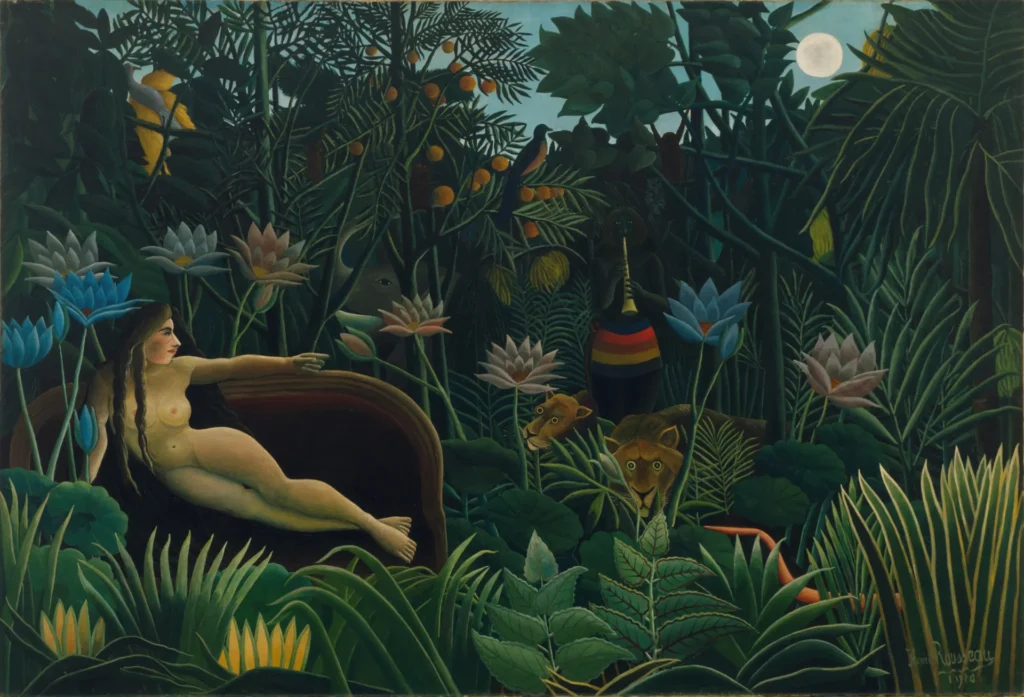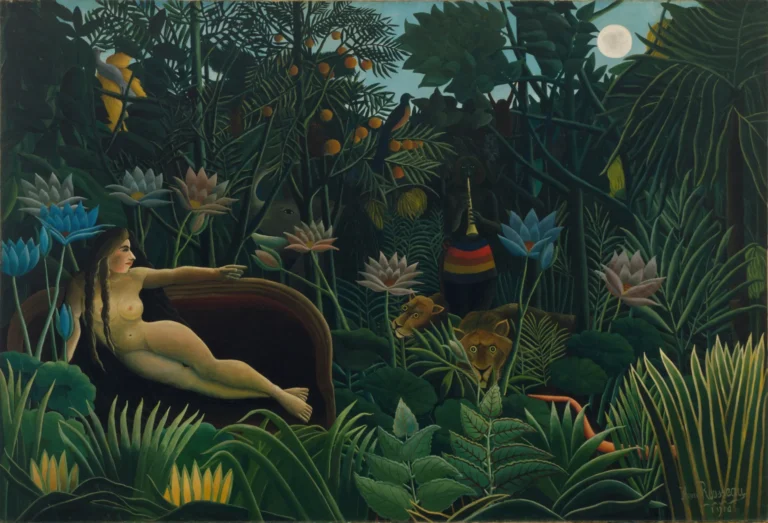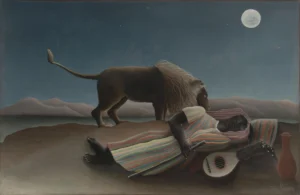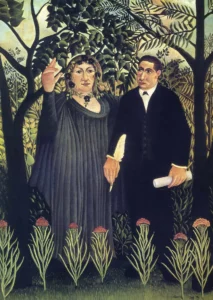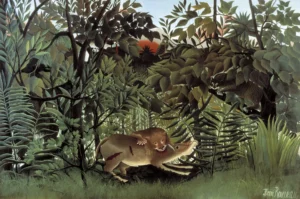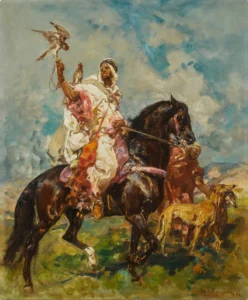The Dream (1910)
Painted in 1910, The Dream by Henri Rousseau showcases a vibrant jungle filled with exotic plants and wildlife, centering on a nude woman reclining on a crimson sofa. The painting reflects Rousseau's unique Naïve Art style, embracing imaginative composition and detailing that merges reality with surrealistic elements. The fantastical depiction is often explored for its dreamy narrative, combining both art and the psyche's intrigue, establishing a profound connection with viewers and art enthusiasts alike.
Year 1910
About the Artwork
Henri Rousseau's The Dream was painted during a transformative period in the artist's life when he was increasingly fascinated by dreams and imagination. The central female figure is thought to represent Yadwigha, Rousseau's youthful lover, symbolizing romantic yearnings. Set against an enchanting backdrop of lush foliage and vibrant wildlife, the painting is a narrative of longing and fantasy. Rousseau believed that the woman was dreaming of the jungle while reclined in Paris, creating a compelling interplay between reality and fantasy. This notion resonates deeply, reflecting Rousseau’s context within the emerging modern art movement. Despite being dismissed by critics of his time, Rousseau’s work has gained monumental recognition posthumously, and The Dream stands testament to his artistry and vision.
Did You Know
The central figure in The Dream is widely believed to represent Yadwigha, Rousseau’s Polish mistress, symbolizing his personal romantic yearnings and the deep emotional connection he had with her.
Despite initial criticism and dismissal by art critics of his lifetime, Rousseau’s works, particularly The Dream, have since become emblematic of the Naïve Art movement, influencing countless artists and securing his legacy in art history.
The Dream was first showcased at the Salon des Indépendants just months before Rousseau’s passing, leaving a profound impact on the art community, showcasing his unique ability to blend fantasy and reality in a striking visual narrative.




